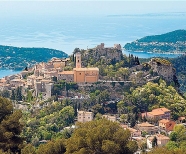2026 Autumn Budget event industry asks, event inclusion, and more
This month’s news highlights industry 2026 Autumn Budget asks, an industry driven by growth, accountability and inclusion. From economic gains to new standards and support...

Nice is the fifth most populous city in France, after Paris, Marseille, Lyon and Toulouse, with a population of 348,721 within its administrative limits on a land area of 71.92 km2 (28 sq mi). The urban area of Nice extends beyond the administrative city limits with a population of about 1 millionon an area of 721 km2 (278 sq mi). Located on the south east coast of France on the Mediterranean Sea, Nice is the second-largest French city on the Mediterranean coast after Marseille.
The city is called Nice la Belle (Nissa La Bella in Niçard), which means Nice the Beautiful, which is also the title of the unofficial anthem of Nice, written by Menica Rondelly in 1912. Nice is the capital of the Alpes Maritimes département and the second biggest city of the Provence-Alpes-Côte d’Azur region after Marseille.
The area of today’s Nice is believed to be among the oldest human settlements in Europe. One of the archaeological sites, Terra Amata, displays evidence of a very early use of fire. Around 350 BC, Greeks of Marseille founded a permanent settlement and called it Nikaia, after Nike, the goddess of victory.
Through the ages, the town has changed hands many times. Its strategic location and port significantly contributed to its maritime strength. For years it was a Piedmontese dominion, then became part of France between 1792 and 1815, when it was returned to Piedmont-Sardinia until its annexation by France in 1860. Culturally and architecturally enriched over time, today Nice has become a truly cosmopolitan tourist destination. The spectacular natural beauty of the Nice area and its mild Mediterranean climate came to the attention of the English upper classes in the second half of the 18th century, when an increasing number of aristocratic families took to spending their winter there. The city’s main seaside promenade, the Promenade des Anglais (‘the Walkway of the English’) owes its name to the earliest visitors to the resort. For decades now, the picturesque Nicean surroundings have attracted not only those in search of relaxation, but also those seeking inspiration.
The clear air and soft light has been of particular appeal to some of Western culture’s most outstanding painters, such as Marc Chagall, Henri Matisse, Niki de Saint Phalle and Arman. Their work is commemorated in many of the city’s museums, including Musée Marc Chagall, Musée Matisse and Musée des Beaux-Arts Jules Chéret. The climate and landscape are still what attracts most visitors today. It has the second largest hotel capacity in the country and it’s the second-most visited place in France after Paris, receiving 4 million tourists every year. It also has the second busiest airport in France after Paris and two convention centres dedicated to business tourism. The city also has a university, several business districts and some major cultural facilities, such as museums, a national theatre, an opera house with a regional library and several concert halls and casinos. It is the historical capital city of the County of Nice (Comté de Nice).
Nice experiences a Mediterranean climate. The summer/holiday season lasts for 6 months, from May to October, although in April and November sometimes there are temperatures above 20 °C (68 °F). Winters are mild, with average temperatures of 13.4 °C (56.1 °F) during the day and 5.8 °C (42.4 °F) at night in the period from December to February.